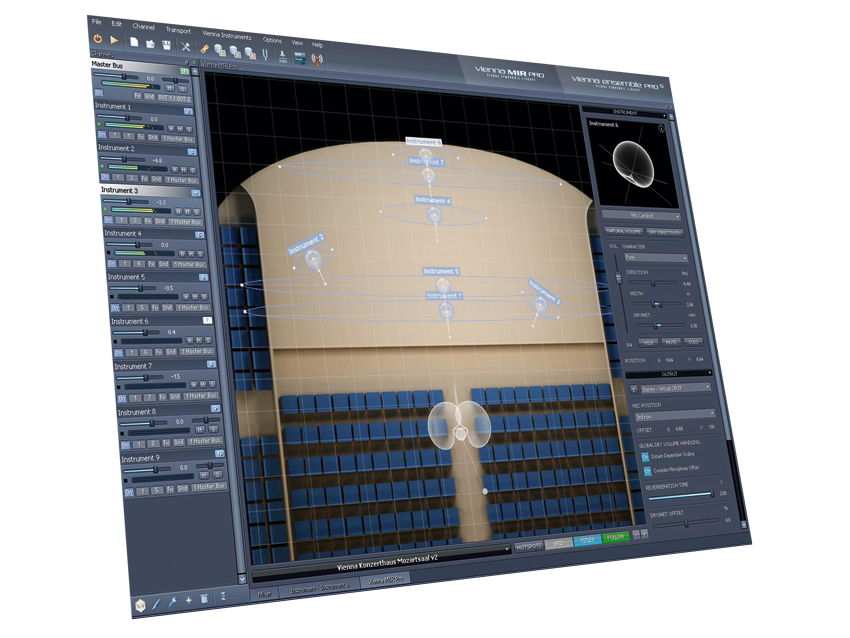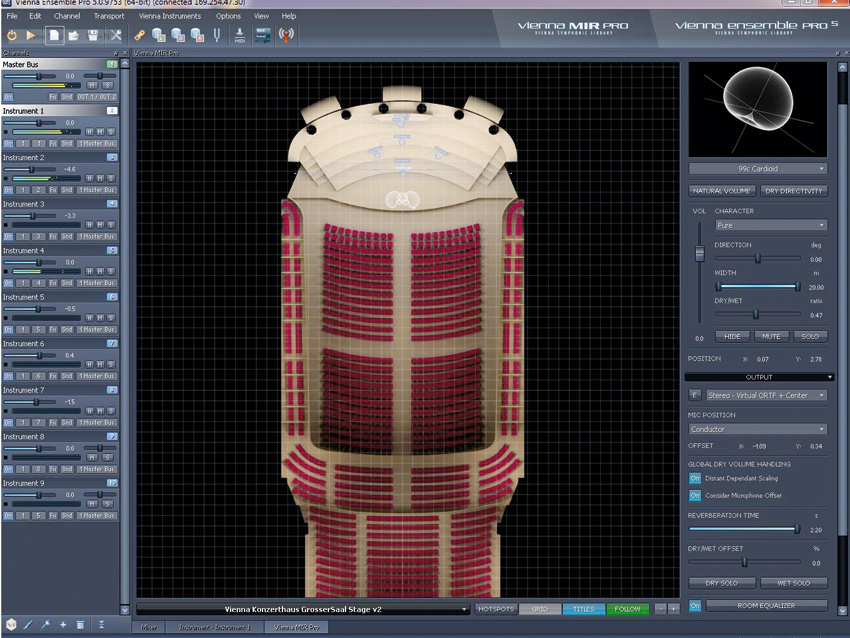MusicRadar Verdict
A stunning development in spatial placement that integrates seamlessly into any setup.
Pros
- +
Fabulous spatial placement; simple yet powerful user interface; now works with audio and virtual instruments.
Cons
- -
Expensive; spaces geared primarily towards orchestral and large ensemble work.
MusicRadar's got your back

Vienna MIR Pro

Vienna MIR Pro
Trying to get everything in a track to sit together can be a nightmare, especially if you have a mix of acoustic and electronic sources.
Wouldn't it be great to be able to place instruments where you want them in one soundstage, and move them further away or drag them closer at will? It can take a lot of fiddling around with different reverbs and delays to give an impression of depth and space.
"For those hankering after the sound of the room as an integral part of the final mix result, MIR is as close as you can get right now without leaving the virtual world."
VSL certainly wanted that for its sampled instruments, and so developed MIR as a virtual soundstage for its virtual orchestra. For those hankering after the sound of the room as an integral part of the final mix result, MIR is as close as you can get right now without leaving the virtual world.
Impulse response
MIR is convolution based but unlike many other similar devices the spaces are seriously multi-sampled with over 1000 individual IR's per room. The reasoning is that, like a grand piano, a great acoustic environment needs to have every nuance reproduced.
All these IR's mean that wherever you place a sound source in the environment there is always an accurate reproduction of what it sounds like just there. Not only that, if you are using it to mix your Vienna Orchestra samples it even knows if your instrument faces forward, like a trumpet, or backwards, like a horn - and how it would project into the room.
These spaces will give you anything from stereo to 7.1 surround so if you find the space you like in one format it should translate into another very easily.
User interface
Having launched it, the first thing you are asked to do is select a venue. Currently there are some five concert halls, four recording and broadcast studios and two churches.
The concert halls come with the program but the other spaces have to be purchased so be aware that with this system you will be expected to pay as more venues are added.
Each venue has three of four basic perspectives, each corresponding to a microphone position. Once you have called up the required space you can then choose the configuration of the main microphone and move it to suit what you are doing.
Having loaded an instrument or assigned an audio input, each sound source is represented by an instrument icon. You can grab these and move them around the screen to your heart's content. By grabbing the dots on the icons you can do things such as adjusting the wet/dry balance and altering the direction, volume and width.
More control
On the right side of the screen there is plenty more to play with. The icon controls are duplicated for those who prefer a more conventional fader.
Further down you can adjust the response of the main mic and below that you will see reverb time. If this is perfect for some of the sources but not all, you can change its length for each individual source. So not only can you change the balance of room/source, position, orientation and so on but you can also set individual reverb times within the same space.
Thinking too much about what MIR is doing may well cause a headache, but the ease with which it does it is fantastic.
Pro 5 integration
MIR and Ensemble Pro 5 now form one integrated environment; you now get seamless virtual instrument and audio links straight to and from your DAW. This means you can use MIR as a mix environment for all your audio sources no matter what they are or where they were recorded.
This starts to give you options previously impossible. It's one thing to add reverb to a sound but it's another to have the ability to place it in a space and move it around.
Each individual sound source has is own channel in the Pro 5 mixer so it can be effected with plugs before it enters MIR and its output can be sent back to discrete inputs on your DAW for more 'post' processing.
There are already two other room packs available but if we were to add one caveat, it would be that at present the spaces themselves are more suited to orchestral or large ensemble work.
What about the Wood Room at Real World, Abbey Road 2 or Studio A at Avatar in New York? Imagine being able to put your drums or guitars into one of those spaces and move it around to find the sweet spot, then add compression and EQ.
This is a very clever bit of software that has come of age with its ability to work with external audio, but it is expensive and requires a lot of computing power to get it working. Check the system requirements before getting carried away with the credit card, but if it suits your machine and wallet, you won't be disappointed.
“Built from the same sacred stash of NOS silicon transistors and germanium diodes, giving it the soul – and snarl – of the original”: An octave-fuzz cult classic returns as Jam Pedals resurrects the Octaurus
What’s the buzz? Meet Yellowjacket, Cherry Audio's recreation of EDP’s trend-setting Wasp from 1978
“A fabulous trip through all eight songs by 24 wonderful artists and remixers... way beyond anything I could have hoped for”: Robert Smith announces new Cure remix album









